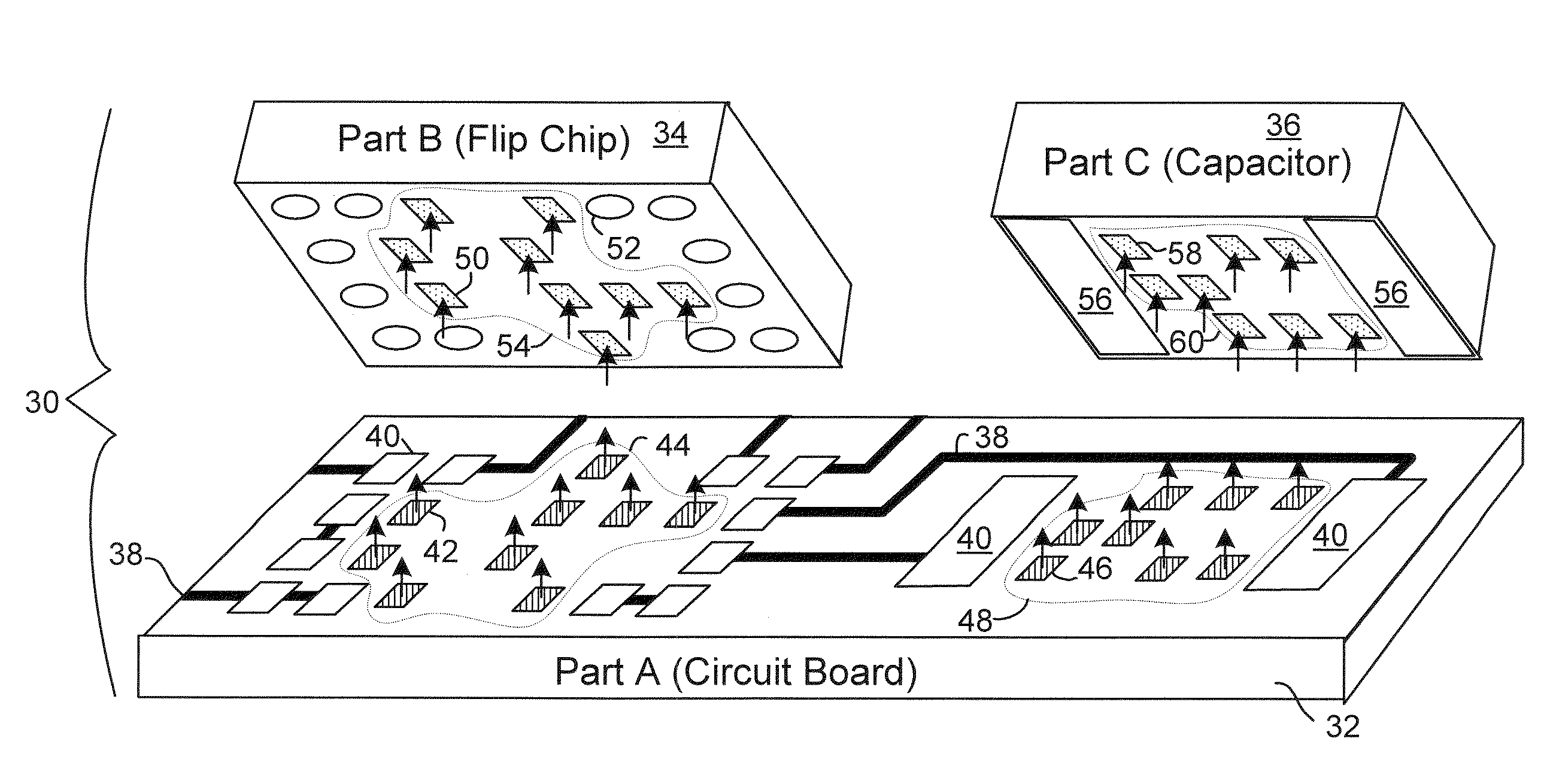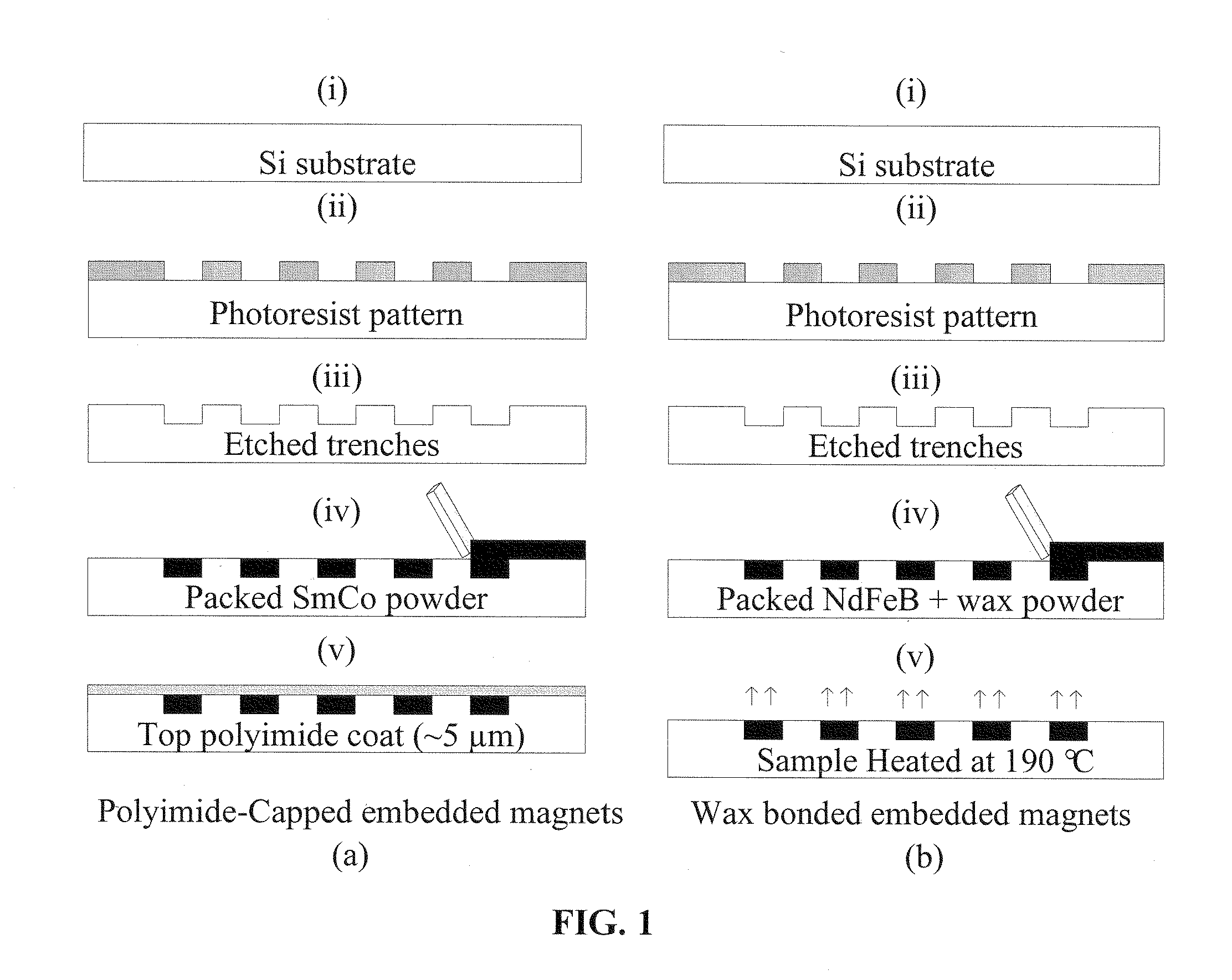Enhanced magnetic self-assembly using integrated micromagnets
- Summary
- Abstract
- Description
- Claims
- Application Information
AI Technical Summary
Benefits of technology
Problems solved by technology
Method used
Image
Examples
example 1
Multifunctional Self-Assembly of Millimeter Scale Components
[0104]The self-assembly of the components in this example use magnetic forces between permanent micromagnets integrated on the component surfaces. Part-to-part assembly is demonstrated by batch assembly of free-floating 1 mm×1 mm×0.5 mm silicon parts in a liquid environment with the assembly yield varying from 88% to 90%. Part-to-substrate assembly is demonstrated by assembling an ordered array on a substrate in a dry environment with the assembly yield varying from 87% to 98%. In both cases, diverse magnetic shapes / patterns are used to control the alignment and angular orientation of the components and assembly times range from 15-240 s.
[0105]In this example, part-to-part MSA in a liquid environment and part-to-substrate assembly in dry environment, both with angular orientation are accomplished. Different magnetic patterns such as squares, stripes, ovals, triangles, and arrow-heads are explored, covering 4-75% of the bond...
PUM
| Property | Measurement | Unit |
|---|---|---|
| Time | aaaaa | aaaaa |
| Magnetic field | aaaaa | aaaaa |
| Size | aaaaa | aaaaa |
Abstract
Description
Claims
Application Information
 Login to View More
Login to View More - R&D
- Intellectual Property
- Life Sciences
- Materials
- Tech Scout
- Unparalleled Data Quality
- Higher Quality Content
- 60% Fewer Hallucinations
Browse by: Latest US Patents, China's latest patents, Technical Efficacy Thesaurus, Application Domain, Technology Topic, Popular Technical Reports.
© 2025 PatSnap. All rights reserved.Legal|Privacy policy|Modern Slavery Act Transparency Statement|Sitemap|About US| Contact US: help@patsnap.com



